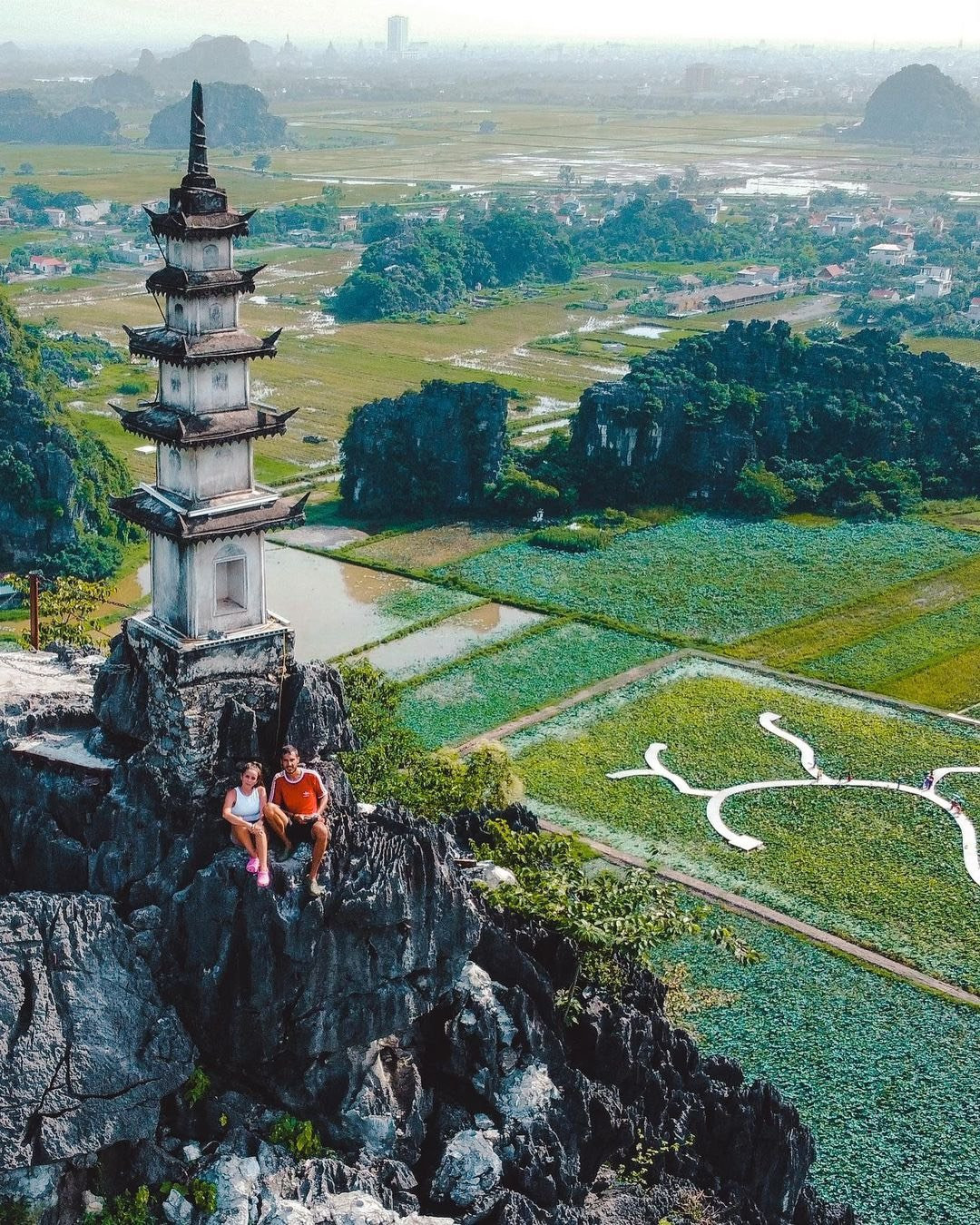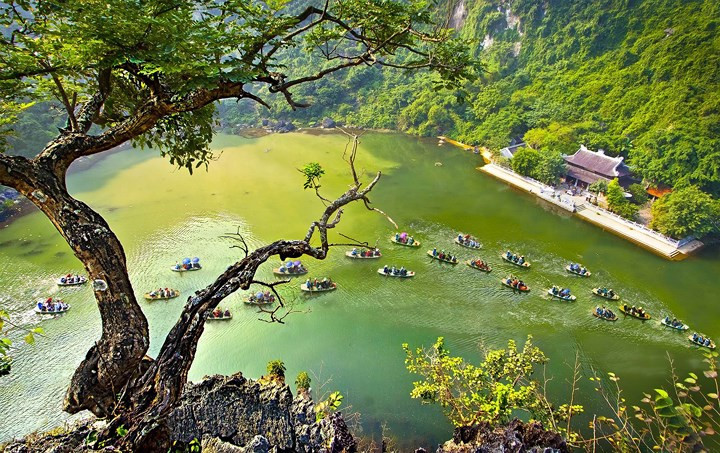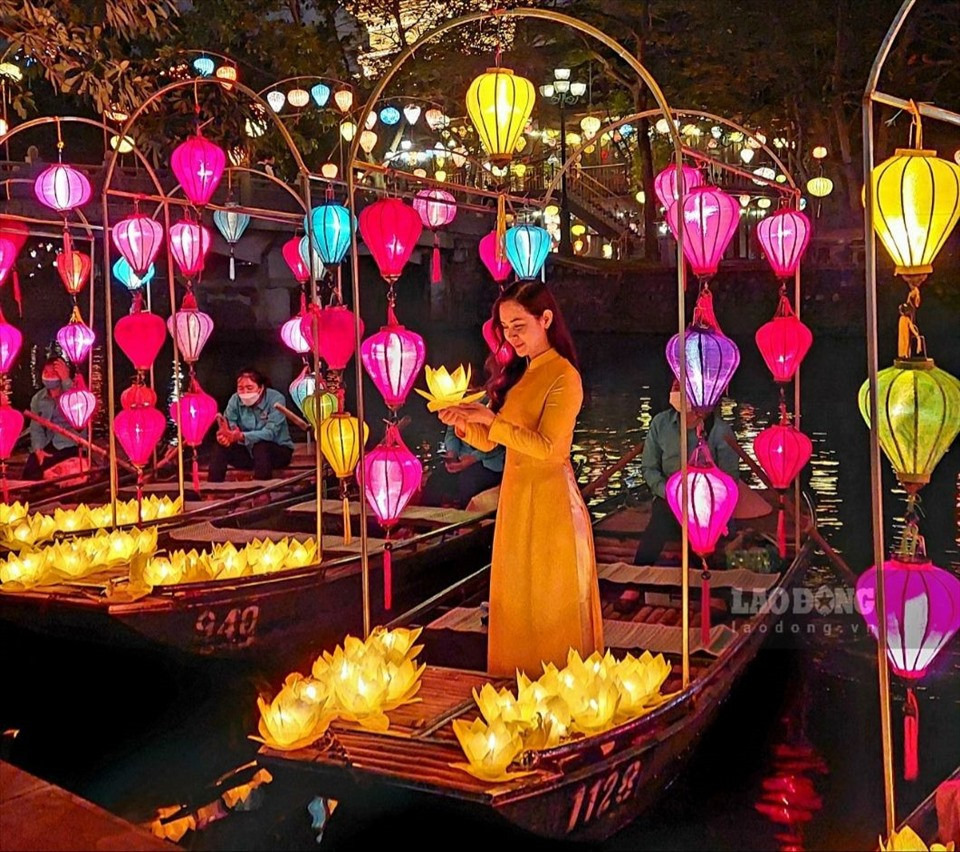
Mua Cave is located at the foot of the mountain which is a big upside-down bell-shaped, estimated about 800m2 in size named Mua (Dancing). From the bottom of the mountain, you can see clearly the white stone steps leading to the summit of the mountain. The two sides of the staircase are carved in stone with dragon and phoenix images; these are typical of Tran architecture.
Unlike other hustle and bustle tourist hubs in the area, Mua Cave has a charming and peaceful traditional beauty that is hard to find anywhere else. Being put into exploitation early, the services for tourists here are orderly and clear; you can avoid jostling and scamming.
Presenting the cultural values, traditional performances that recreate the ancient kings’ daily scene in the tourist area are one of the special highlights to preserve the nation’s thousand-year culture.
Besides the natural values of spectacular scenes, Mua Cave history also contributes significantly to the value of this site in general. According to Vietnamese legend, King Tran established Am Thai Vi located on the top of the mountain on his visit to Hoa Lu, which is the old capital of Vietnam. The King often came here to relax, sightsee and enjoy the dancing and singing performed by the odalisques. The place was named the Mua cave meaning “Dancing Cave”.
Mua Cave is located on the plain, surrounded by hills and mountains; it offers Hoa Lu a good shield and a prosperous agriculture of wet rice. From this point, you can guess why Mua Cave used to be the capital of Vietnam under the two dynasties of Dinh and Tien Le.
In addition, Mua Cave also reflects religious values, especially Vietnamese beliefs, and Buddhism. In the cave, you can explore the practice of worshipping “Tiger” which is common in East Asia. You can see the statue of Quan Am Bo Tat (the Goddess of Mercy) looking toward the old capital of Hoa Lu.
Trang An eco-tourism area

Nature has endowed Ninh Binh with magnificent green mountains and blue water. The Trang An eco-tourism site is part of the Trang An Scenic Landscape Complex, an “outdoor geological museum”. Every year, the site receives tens of thousands of visitors who come to explore its unique cave and grotto system.
7km west of the center of Ninh Binh province and 96 km south of Hanoi, Trang An covers an area of nearly 2,200 ha surrounded by limestone, hills, and river valleys. The only way to discover the place’s beauty is on a small bamboo boat. A 3-hour tour begins at the reception center in Trang An avenue. It takes about 10 minutes to go from Trang An to the river through the mountains.
With an area of 6,172ha, Trang An Landscape Site has four main distinct areas including the scenic area of Tam Coc – Bich Dong, the cultural and historical of Hoa Lu Ancient Citadel, the specially-used primary forest of Hoa Lu and the ecological area of Trang An.
There are many attractions in Trang An. The first one is Natural Karst Tower which offers the awesome and grandiose sight with mysterious caves and impressive limestone resembling the mythical swords.
Visiting the Trang An Ecotourism Complex, tourists cannot ignore 48 Trang An caves such as Dia Linh cave, May cave, Sinh Du cave, and the others. A boat trip through caves is an interesting, thrilling experience to see the strange shapes on the deep grottoes.
After leaving the grottoes, tourists can visit several historic temples and pagodas located on the Trang An karst tower’s top to pray for themselves and their family members. Bai Dinh pagoda received thousands of visitors in the first month of the Lunar year.
The most interesting destination in Trang An – Ninh Binh ecological tourist complex is Skull Island Movie, a tribal village with bamboo-made huts and locals dressing up like the aborigines. It feels like you are in the movie which shot scenes in Vietnam.
Hoa Lu Ancient Capital

Hoa Lu is an ancient city surrounded by the Trang An limestone mountains. Its northwest is bordered by the Hoang Long River, the tributaries of which run through the capital, cooling the city and serving as convenient waterways.
Hoa Lu is the first capital of Vietnam with a wide range of historical landmarks. In 968, King Dinh Bo Linh of Dai Co Viet (an old name of Vietnam) constructed his capital in Hoa Lu and ruled until the year 980.
Afterwards, Hoa Lu existed for almost 30 years of the Early Le dynasty (980-1009) and one year of the Ly dynasty (1009-1010). In 1010, King Ly Thai To moved it to Thang Long (Ha Noi now) and since, Hoa Lu became a capital which restored many ancient temples and relic sites of Vietnam.
The Royal Court was built on an area of 150 hectares in the eastern part of the capital while the western part served as a site to educate and protect children. The surroundings are quite picturesque, with ponds and limestone range forming a jagged horizon.
Nowadays, Hoa Lu capital plays an important role in architectural and historical complex of Viet Nam. It was recognized as one of the four cores forming the UNESCO World Heritage Site Trang An Complex.
Tinh Le